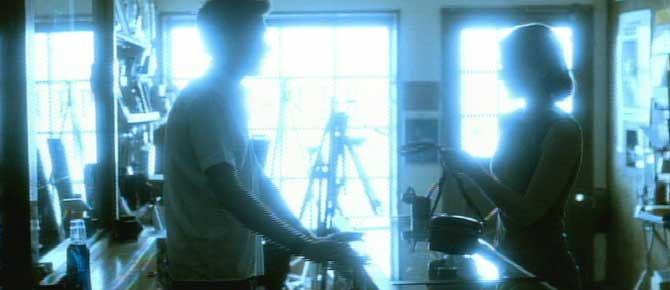I give you the 2nd edition of greg.org answers, wherein I provide the information you thought you'd find on this site, but didn't.
Q "The best This American Life" (greg.org Googlerank: 3rd of 4 results)
A I did answer that, last April (Conventions, with John Perry Barlow). But my weasely, equivocating prose ("perhaps the best TAL episode in my memory") is about as slippery as, well, let's just say "the case still needs to be made."
 Still, "the best" is tricky. The TAL Staff give their favorites, which hasn't been added to since 11/01, so we're missing about 15 months of judgment calls.
Still, "the best" is tricky. The TAL Staff give their favorites, which hasn't been added to since 11/01, so we're missing about 15 months of judgment calls.
When TAL won the Univ. of Georgia's Peabody Award in 1996, the jurors cited three episodes from that year: The cruelty of children, When you talk about music, and From a distance. Ostensibly chosen to show TAL's range, these episodes--which include stories of gay teen anguish, a Tom Jones impersonator, and obsession with celebrity--actually reflect the "we're the center of the universe!" ecstasy that overtook Georgia in 1996, when hometown girl, Ru-Paul, ruled the world.
You could always buy the CD. Lies, Sissies, and Fiascoes: The Best of This American Life has 12 stories on 2 discs. Until Ira Glass starts taking my calls again, that's the best I can do.
![]() Q "Buy Carambar online"(Googlerank: 2 of 12)
Q "Buy Carambar online"(Googlerank: 2 of 12)
A "Always popular, Carambar is a chewy caramel baton-shaped candy," the French cash register equivalent of chocolatey Ice Cubes and crack pipes with little roses in them. Sure, Donald Rumsfeld dismisses Carambar as "Old Europe," but isn't that what you'd expect the ringleader of the global aspartame conspiracy to say?
Buy Carambar online from the excellent French Feast:
box of 200 (1750g) - $25.00
individual (8g) $0.15
 Q "Simpsons conservative fansites" (Googlerank: 5th of 9 results)
Q "Simpsons conservative fansites" (Googlerank: 5th of 9 results)
A Since "Blessed Ned of Springfield" graced the cover of Christianity Today, the story practically wrote itself: Conservatives actually love The Simpsons. Clearly the article's author, Mark Pinsky, is a fan; he wrote The Gospel According to The Simpsons. But he's also a reporter for the Orlando Sentinel; are there any non-journalist fans?
Simplistically equating conservative and religious, I found Noah Gradofsky's The Simpsons Talmud and JVibe's "Hey man, don't have a leavened bread!" site for Passover ritual, The Homer Counter.
Of course religious and conservative are not synonyms, unless you're a godless communist. The #1 conservative Simpsons fan has to be National Review editor-at-large, Jonah Goldberg, who's May 2000 article, "Homer Never Nods: The Importance of The Simpsons," sets a thoughtful, hi-larious high bar for contemporary conservative writing. And UVA Professor Paul Cantor's essay, The Simpsons: Atomistic Politics and the Nuclear Family" in Political Theory, provides the intellectual foundation for conservative Simpsons appreciation. Still, I'd have to count these as professional fans.
Q "David Gallagher Shirtless Pictures" (Googlerank: 106th of 376 results)
A Dude. Do you know who this is? I had to look it up. It's the kid from 7th Heaven. Cold comfort that he turns 18 in less than two weeks; any shirtless pictures are from when he's a kid.
I don't know which is more disturbing, that you were looking for these pics in the first place, that you trawled through eleven increasingly irrelevant screens of Google search results before clicking on my site, or that what probably caught your attention on Google was the phrase, "shirtless Aryans," (which I used in a discussion of contemporary art's influence on film to describe the Bruce Weber-y American History X.)
I've had enough for now. Two other answers must wait, I'm afraid:
Q "eyeing each inert mien and artificial plan" (hint: it's a quote from the Herbert Muschamp/Showgirls parody. I'm still looking.)
Q "Matthew Barney Cremaster on DVD" this is by far the most-asked search that goes unfound here at greg.org. But don't despair. I'm working on a very interesting answer for this one. Stay tuned.






 Puppy, Jeff Koons, $1,650
Puppy, Jeff Koons, $1,650












 One, directed by Stewart Hendler (image: phantompictures.com)
One, directed by Stewart Hendler (image: phantompictures.com)





 Gwathmey: "It's haunting...eerie"
Meier: "ix-nay on the aunting-hay, uck-Chay"
image: LMDC
Gwathmey: "It's haunting...eerie"
Meier: "ix-nay on the aunting-hay, uck-Chay"
image: LMDC
 Bright Glow Tube (all images, powerpointart.com)
Bright Glow Tube (all images, powerpointart.com) Hay Theme
Hay Theme WTC Memorial Wall, US Flag with Decorations
WTC Memorial Wall, US Flag with Decorations Chrome Cross w/Text Area
Chrome Cross w/Text Area
 Russian Ark, dir. by Aleksandr Sokurov
image: guardian.co.uk
Russian Ark, dir. by Aleksandr Sokurov
image: guardian.co.uk

















